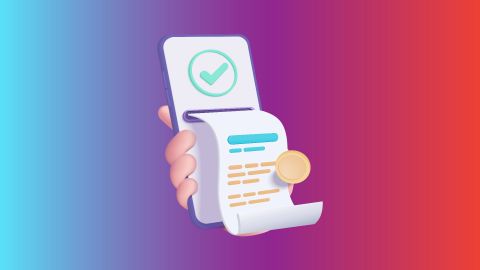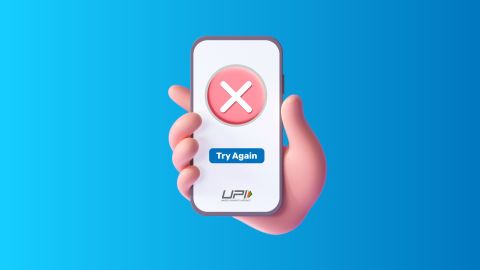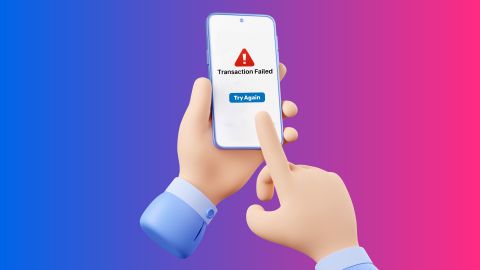Energy units like kilowatt-hours (kWh) power your appliances and determine utility bills. Understand how they work, calculate usage, and save energy effectively.
What are energy units
-
-
Energy units are standard measures used to quantify the amount of electrical energy consumed over time. The most commonly used unit is the kilowatt-hour (kWh), which represents the energy consumed by a device with a power rating of 1 kilowatt running for one hour. Other units include the joule (J) and calorie, but kWh is widely used in electricity billing and household energy calculations.
How are energy units measured
Energy units are measured to quantify the consumption of electricity over time. The standard unit used globally is the kilowatt-hour (kWh), which represents the energy used by a 1-kilowatt appliance running for one hour. Electricity meters installed in households and businesses measure energy in kWh, forming the basis for calculating utility bills.Understanding Kilowatt-hour (kWh): The standard unit
Calculating your electricity consumption in energy units
1. Identify the wattage of the appliance (in kW).
2. Multiply the wattage by the hours of usage.
3. Sum the total kWh for all appliances to determine total consumption.
4. Compare with your electricity bill to verify consumption.
For example:
A 500-watt refrigerator running for 10 hours consumes.
Multiply by the utility rate to estimate costs.Energy units in appliances: Examples and breakdown
Appliance Average power (kW) Usage time (Hours) Energy consumed (kWh) LED bulb 0.01 5 0.05 Washing machine 0.5 2 1.0 Air conditioner 2.0 4 8.0 Refrigerator 0.15 24 3.6
Factors affecting energy consumption:
1. The power rating of appliances.
2. Duration and frequency of usage.Consider Bajaj Finserv for electricity bill payments
Electricity power plays a significant role in our transition to renewable energy sources. As we harness this clean power, we must efficiently manage our electricity bills. Bajaj Finserv offers a convenient platform for making electricity bill payments through Bajaj Pay.
This platform lets you pay your bills securely using cards, UPI, or wallets. By integrating electricity power into our power grid, we can reduce reliance on traditional energy sources and promote sustainability. For seamless transactions and to stay updated on your payments, consider using Bajaj Pay for your electricity bill payments.Importance of electricity payment online
Paying electricity bills online saves time and effort. Platforms like Bajaj Pay offer unmatched convenience:- Instant payments: No delays or long queues.
- Wide accessibility: Pay anytime, anywhere.
- Safe transactions: High-end encryption ensures secure payments.By choosing Bajaj Pay, you support sustainability through efficient energy management.
Steps to pay your electricity bill on Bajaj Finserv website
Here are the steps to pay electricity bill using consumer number:
1. Visit the Bajaj Finserv website
2. Navigate to ‘ELECTRICITY BILL PAYMENT’ under the ‘PAYMENTS’ section drop-down and click on ‘PAY NOW’
3. Select your electricity provider from the drop-down
4. Enter consumer number and click on ‘FETCH YOUR BILL’
5. On the next page verify the bill details and amount
6. Click on ‘PROCEED TO PAY’ to initiate payment process
7. Choose from the available payment options: net banking, credit/debit cards, Bajaj Pay UPI, or Bajaj Pay WalletFees and charges
A convenience fee of up to 2% (inclusive of applicable taxes) will be charged. For more information on fees and charges, click here.
Note: For failed transactions, the total amount, including charges except taxes, is reversed.
-
Recharge and Pay Bills
Mobile Prepaid
Mobile Postpaid
Broadband Bill Payment
Electricity Bill Payment
Bajaj Finserv App for All Your Financial Needs and Goals
Trusted by 50 million+ customers in India, Bajaj Finserv App is a one-stop solution for all your financial needs and goals.
You can use the Bajaj Finserv App to:
Apply for loans online, such as Instant Personal Loan, Home Loan, Business Loan, Gold Loan, and more.
Explore and apply for co-branded credit cards online.
Invest in fixed deposits and mutual funds on the app.
Choose from multiple insurance for your health, motor and even pocket insurance, from various insurance providers.
Pay and manage your bills and recharges using the BBPS platform. Use Bajaj Pay and Bajaj Wallet for quick and simple money transfers and transactions.
Apply for Insta EMI Card and get a pre-approved limit on the app. Explore over 1 million products on the app that can be purchased from a partner store on Easy EMIs.
Shop from over 100+ brand partners that offer a diverse range of products and services.
Use specialised tools like EMI calculators, SIP Calculators
Check your credit score, download loan statements and even get quick customer support—all on the app.
Download the Bajaj Finserv App today and experience the convenience of managing your finances on one app.
You can use the Bajaj Finserv App to:
Apply for loans online, such as Instant Personal Loan, Home Loan, Business Loan, Gold Loan, and more.
Explore and apply for co-branded credit cards online.
Invest in fixed deposits and mutual funds on the app.
Choose from multiple insurance for your health, motor and even pocket insurance, from various insurance providers.
Pay and manage your bills and recharges using the BBPS platform. Use Bajaj Pay and Bajaj Wallet for quick and simple money transfers and transactions.
Apply for Insta EMI Card and get a pre-approved limit on the app. Explore over 1 million products on the app that can be purchased from a partner store on Easy EMIs.
Shop from over 100+ brand partners that offer a diverse range of products and services.
Use specialised tools like EMI calculators, SIP Calculators
Check your credit score, download loan statements and even get quick customer support—all on the app.
Download the Bajaj Finserv App today and experience the convenience of managing your finances on one app.
Frequently asked questions
What is the definition of an energy unit in electricity?
An energy unit in electricity is a measure of electrical energy consumed or produced over time. The standard unit for measuring electricity consumption is the kilowatt-hour (kWh), which represents the energy used by a 1-kilowatt appliance running for one hour.
How is energy usage calculated in kilowatt-hours (kWh)?
To calculate energy usage in kWh, multiply the power rating of an appliance (in kilowatts) by the number of hours it is used. The formula is:
\text{Energy (kWh)} = \text{Power (kW)} \times \text{Time (hours)}
For example, if a 2 kW air conditioner runs for 5 hours, the energy consumption is:
\text{Energy} = 2 \, \text{kW} \times 5 \, \text{hours} = 10 \, \text{kWh}
\text{Energy (kWh)} = \text{Power (kW)} \times \text{Time (hours)}
For example, if a 2 kW air conditioner runs for 5 hours, the energy consumption is:
\text{Energy} = 2 \, \text{kW} \times 5 \, \text{hours} = 10 \, \text{kWh}
Which appliances consume the most energy units?
Appliances that consume the most energy units are typically those that require a significant amount of power for operation. These include:
1. Air Conditioners
2. Heaters
3. Water Heaters
4. Washing Machines (especially when using hot water)
5. Refrigerators (especially larger or older models)
These appliances use more power due to their continuous or high-energy-demand operation.
1. Air Conditioners
2. Heaters
3. Water Heaters
4. Washing Machines (especially when using hot water)
5. Refrigerators (especially larger or older models)
These appliances use more power due to their continuous or high-energy-demand operation.
What factors affect energy consumption in appliances?
Energy consumption in appliances is influenced by several factors, including the power rating of the appliance, the duration and frequency of use, the efficiency of the appliance, and the ambient temperature (for heating or cooling appliances). The higher the wattage and the longer an appliance runs, the more energy it will consume.
How can i reduce my electricity consumption?
To reduce electricity consumption, consider using energy-efficient appliances with a lower power rating, turning off appliances when not in use, using LED bulbs, setting thermostats to moderate temperatures, and regularly maintaining appliances for optimal performance. Additionally, you can invest in smart home technology to better control usage and automate energy-saving practices.
Show More
Show Less




